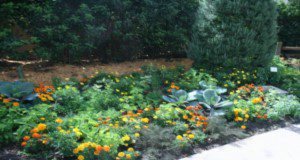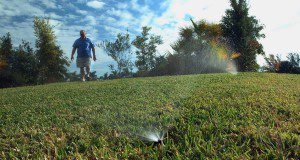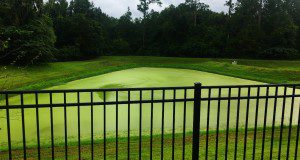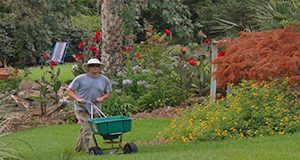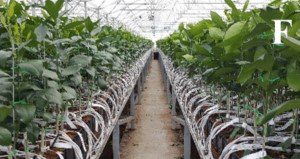Maintaining edible landscapes in a way that protects the environment is an important concern for protecting Florida’s water quality. The objective of this new 7-page publication is to introduce the framework of the Florida-Friendly Landscaping™ principles and apply the principles to guide decisions about Best Management Practices (BMPs) for care of edible landscapes. Written by Tiare Silvasy, Lynn Barber, Esen Momol, Tina McIntyre, Tom Wichman, Gail Hansen, Jen Marvin, Terra Freeman, Joseph Sewards, Wendy Wilber, and Jacqlyn Rivas.
https://edis.ifas.ufl.edu/ep594
Tag: fertilizer
An Overview of Key Soil Nitrogen Cycling Transformations
Although nitrogen (N) is one of the most abundant elements in the biosphere, it is generally at levels that are limiting for optimum plant growth and crop production in Florida soils. To maintain adequate N levels in Florida soils without having detrimental environmental side effects, one must understand and manage N cycling transformations and processes. This new 5-page article, published by the UF/IFAS Department of Soil and Water Sciences, provides an overview of the N cycle by describing key N transformations that result in soils gaining or losing N. The biotic and abiotic processes that govern these transformations are described, as well as practical examples of these transformations in Florida soils. Written by Clayton J. Nevins, Sarah L. Strauss, and Patrick Inglett.
https://edis.ifas.ufl.edu/ss684
Sources and Transformations of Nitrogen in Urban Landscapes
With 80% of Florida’s residents living within 10 miles of the coast, Florida’s aquatic resources are directly affected by urbanization. The intent of this new 6-page publication of the UF/IFAS Department of Soil and Water Sciences is to describe the urban nitrogen cycle for a nontechnical audience. Ultimately, this document is intended for individuals working in urban environments and concerned about nutrient pollution and water quality issues, but do not have a technical background and want to improve their understanding of nitrogen cycling. Written by Alexander J. Reisinger, Mary G. Lusk, and Ashley R. Smyth.
https://edis.ifas.ufl.edu/ss681
Urban Fertilizer Ordinances in the Context of Environmental Horticulture and Water Quality Extension Programs: Frequently Asked Questions
Excess nitrogen (N) and phosphorus (P) in water bodies are a leading cause of water quality degradation statewide. More than 50 Florida counties and municipalities now have formal fertilizer ordinances, which in some cases include fertilizer blackouts, or bans on the usage of N and P fertilizers during certain times of the year. This 8-page document provides information on the underlying issues of fertilizer use, with an emphasis on an urban setting, and outlines the current state of the science on urban fertilizers and water quality in Florida. Written by Michael D. Dukes, Lisa Krimsky, Mary Lusk, Laurie Trenholm, Bryan Unruh, Michelle Atkinson, and Rao Mylavarapu, and published by the UF/IFAS Department of Agricultural and Biological Engineering, February 2020.
https://edis.ifas.ufl.edu/ae534
Stock Plant and Tree Production: Irrigation and Fertilization
Citrus tree production in nurseries can be divided into three stages: production of rootstock liners, transplant of rootstocks into larger containers, and bud grafting. The objectives of this new 6-page publication of the UF/IFAS Horticultural Sciences Department are to provide general information on irrigation and fertilization for production of citrus nursery trees in seedbeds, nurseries and budwood multiplication blocks. This article, written by Rhuanito Soranz Ferrarezi, is chapter 8b of the forthcoming Citrus Nursery Production Guide.
https://edis.ifas.ufl.edu/hs1333
Using Video Messages to Promote Residential Adoption of Fertilizer Best Practices
Residents may be inclined to over-fertilize their lawns due to pressure to maintain a neighborhood aesthetic. However, this activity can affect water quality. This 3-page document describes a study that was conducted in order to determine if video messages about fertilizer best management practices influenced perceptions of fertilizer use among residents. Written by Amanda D. Ali, Laura A. Sanagorski Warner, Peyton Beattie, Alexa J. Lamm, and Joy N. Rumble and published by the UF/IFAS Department of Agricultural Education and Communication, July 2018.
http://edis.ifas.ufl.edu/wc309
How to Calibrate Your Fertilizer Spreader
Fertilizer application is only effective if you ensure uniform coverage. This 5-page document discusses the calibration and use of fertilizer spreaders for successful application. Written by T.W. Shaddox, J.B. Unruh, and L.E. Trenholm and published by the UF/IFAS Environmental Horticulture Department, November 2017.
http://edis.ifas.ufl.edu/lh024
Florida Fertilizer Usage Statistics
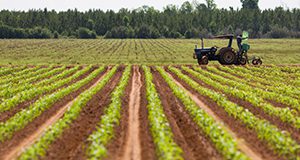
Nutrient applications are often required to meet Florida’s demand for agricultural and horticultural commodities, but often those applications occur in close proximity to water bodies. In order for scientists, policy makers, and citizens to make decisions regarding nutrient issues in Florida, it is important to first understand which markets contribute to Florida’s fertilizer consumption. This three-page fact sheet explains Florida’s fertilizer usage statistics. Written by T.W.Shaddox and published by the Environmental Horticulture Department.
http://edis.ifas.ufl.edu/ep541
